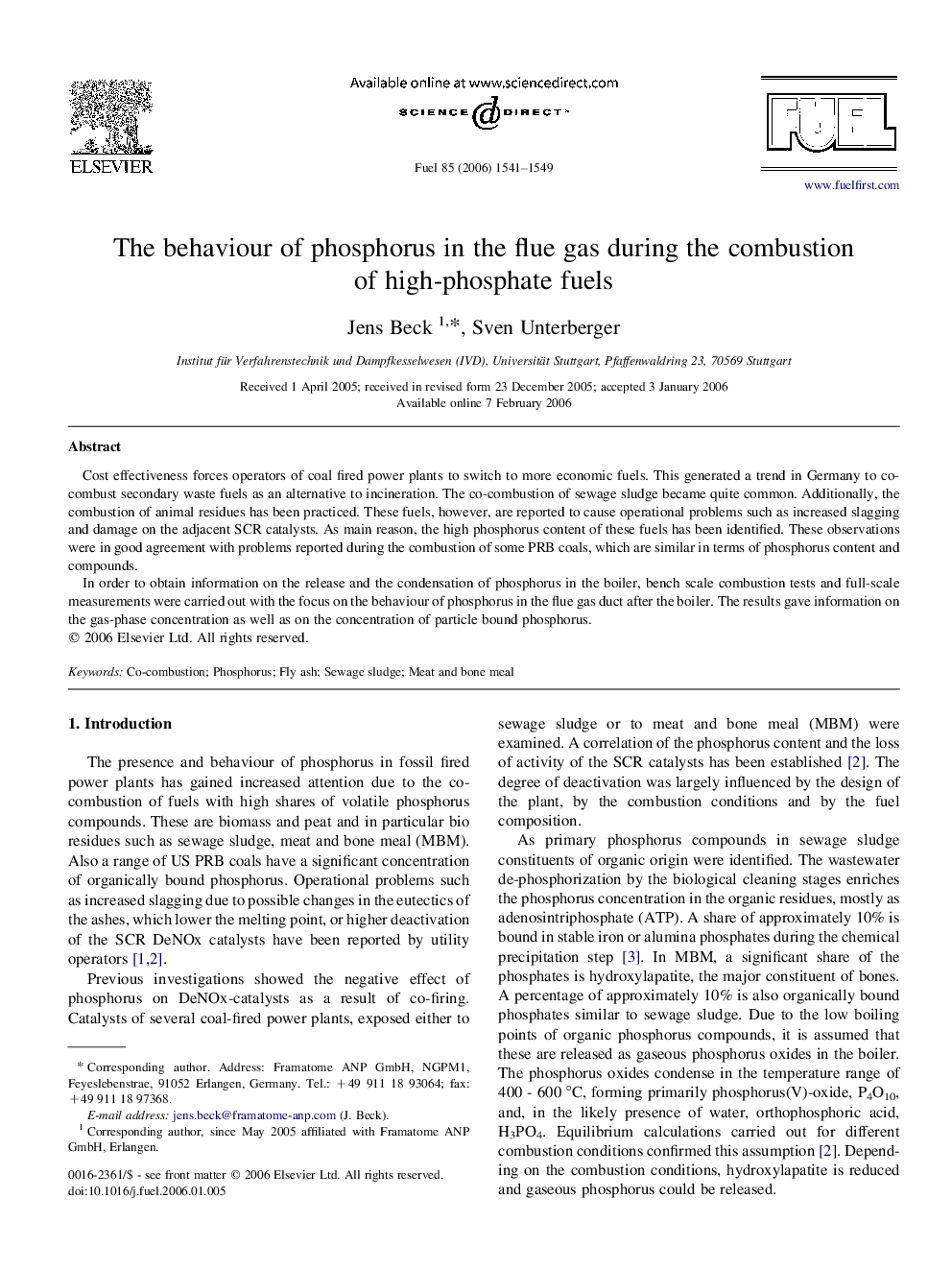| Article ID | Journal | Published Year | Pages | File Type |
|---|---|---|---|---|
| 208574 | Fuel | 2006 | 9 Pages |
Cost effectiveness forces operators of coal fired power plants to switch to more economic fuels. This generated a trend in Germany to co-combust secondary waste fuels as an alternative to incineration. The co-combustion of sewage sludge became quite common. Additionally, the combustion of animal residues has been practiced. These fuels, however, are reported to cause operational problems such as increased slagging and damage on the adjacent SCR catalysts. As main reason, the high phosphorus content of these fuels has been identified. These observations were in good agreement with problems reported during the combustion of some PRB coals, which are similar in terms of phosphorus content and compounds.In order to obtain information on the release and the condensation of phosphorus in the boiler, bench scale combustion tests and full-scale measurements were carried out with the focus on the behaviour of phosphorus in the flue gas duct after the boiler. The results gave information on the gas-phase concentration as well as on the concentration of particle bound phosphorus.
